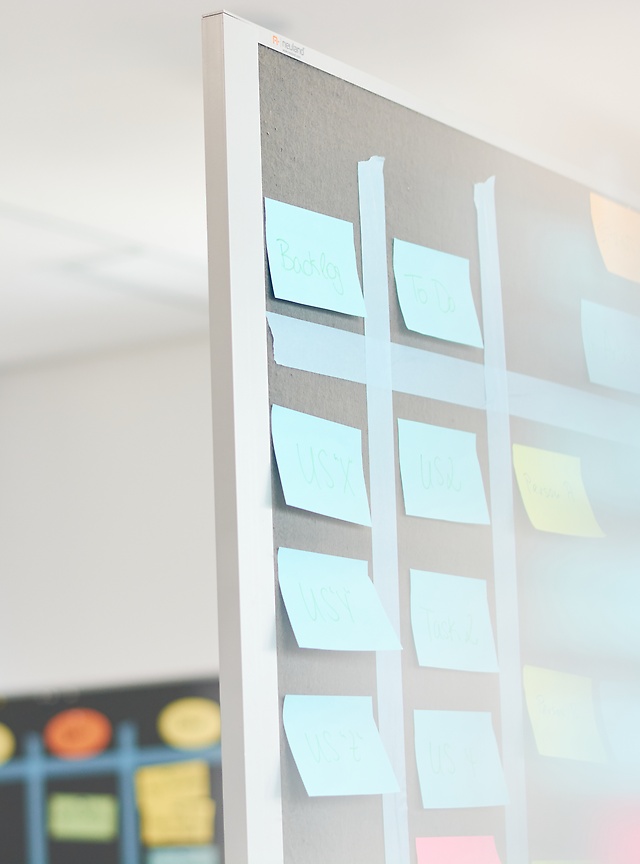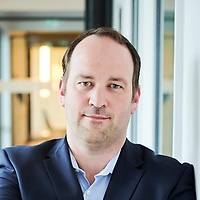21. March 2023 By Stephan Thies
adesso active transformation
Migration to SAP S/4HANA – sooner or later no company will be able to avoid it. We have developed a process model that shows how companies can successfully migrate to S/4HANA in a professional and structured manner as well as in a way that is understandable for all those involved: adesso active transformation. It is backed by a hybrid process model for the transformation of IT systems and landscapes. As an SAP Gold Partner, we work very closely with SAP and have based our model on SAP’s activate model. We want to standardise the transformation process with our active transformation – from strategic planning and organisational enablement to detailed planning and implementation. To this end, we have defined six stages with which we approach the S/4HANA migration process step by step. I want to use this blog post to present these six stages to you so you have a better understanding of our process model.
Stage 1: Enterprise Discover
The first step is to prepare the customer for the migration. In this process, it is not about the technology, but rather to raise awareness: explaining what is in store for you. What options do you have when migrating to S/4HANA? But it is not only you who should get the best possible overview. We, too, want to know exactly what the circumstances are and which approach is most suitable: greenfield, brownfield or hybrid? By the way, I have already written a blog post on this topic.
We work with four streams as part of the migration: organisation and project management, technology, business management and change management. These four streams give customers a clearer idea of the project and bring order to the processes. At the same time, they form the core activities of any project. The streams also serve to improve understanding in complex projects such as a software introduction or a migration. When it comes to change management, I would like to refer you to my colleague Heike Willkomm. She and her team offer great and helpful training sessions and workshops at our customers’ sites that show how change can succeed in a company, enabling everyone involved to feel comfortable about it.
In this manner, the Enterprise Discover stage is the starting point for the migration and it sets the most important framework conditions. This stage generally lasts three to six weeks, so it is quite short and it is characterised by workshops. The goal of this stage: a clear project outline and a mutual update on the current state of the company’s IT.
Stage 2: Prepare
We define the path for the migration project together with you in the Prepare stage. This means that we create a roadmap that guides us in the coming weeks and months – a standardised path for the migration. We conduct this stage predominantly in the traditional consulting and workshop mode: analyse, design, train, implement, coordinate.
In our migration projects, we use building blocks to structure the procedure and create a more standardised path. They accompany the project through all stages and ensure that the project team generates the right result objects at the right time. Building blocks are completed and they are assigned to a stage. We distinguish between business and technical components.
The most important and largest building block is the UX journey. We look at your business processes together and compare them with SAP’s best practices. If they fit well together, we select and adopt the best practices. If they do not, we consider whether we can take old code from the R/3 systems or if we need to try something entirely new. At this point, it is often decided to what extent it would be possible for you to return to the old standard and what procedural changes this would entail.
The result of the UX journey is the light version of a technical concept. It gives us a project plan to use as a basis for the next two stages.
Stage 3: Explore
Now it is time to get down to the nitty-gritty, and the conceptual work begins. Together with you we form process clusters, and then we go through the processes step by step and coordinate them. How do you want to position yourselves in the future? We cannot ever omit this look to the future. Our Interaction Room is an important element in this process. It is a workshop format in which we bring specialist departments and IT together around one table. They sit together and discuss their needs and requirements and the processes. A common approach is the optimal result of these discussions.
From a technical point of view, we take care of system deployment. We set up the system, connect the SAP business technology platform, which is part of modern S/4HANA systems, and have created extensive documentation of results with it. For example, this includes migration concepts, blueprints, user stories, as well as topics around testing and IT security.
At the end of the Explore stage, we have a detailed concept: a qualified backlog for the next stage and a final plan for the implementation stages. In short: all the necessary preparations for implementation have been made.
Stage 4: Realise
This stage sees all the gears meshing nicely together. The main objective of the Realise state is to ensure that the system is ready to go live and ready for a successful integration testing and acceptance. We achieve this by means of substages. We implement, test and approve user stories all according to the backlog from the Explore stage. We carry out migration routines and test cycles and then train the users.
Essentially, it is about implementing the sophisticated concepts through the two streams of business and technology in the form of sprints. Through this, it becomes clear how well the project management that we set up beforehand was, as there is little we can do to change it at this point. In this stage, colleagues from change management are particularly in demand. They accompany the tests and trainings so that we ensure a smooth integration and, above all, that acceptance of the system is successful.
Once all questions have been addressed here, we are ready to put the new system into operation. Here is where the final stage of the adesso active transformation begins.
Stages 5 and 6: Go-live and Run
The dress rehearsal is coming up. We rehearse everything we have set up, tested and implemented so far one last time. At go-live, the system is finally released for use. The successful dress rehearsal ends with the acceptance of the system and roll-out as well as the release for the go-live. The system can be used: the run stage starts.
First, we accompany the restart of the system in the hypercare and steady state activities stage. Then, the handover takes place. This is usually the end of a S/4HANA migration project. Afterwards, we will talk to you again in detail about the whole project and get your feedback. Sensible and critical feedback is essential for us. Only in this way can we become better and optimise the next transformations. This is because when one project ends, the next one begins!
Conclusion
Migration to S/4HANA or the introduction of new software requires careful planning and a close exchange with customers. You need to get an accurate picture of your IT landscape so that together we can choose the best migration approach. Workshops, discussions and training are indispensable for successful project completion.
It is also essential when migrating IT systems and landscapes to have a central theme with a clear focus on business and technical processes. With our process model, adesso active transformation, we help you shape this migration in a clear, understandable, transparent and ultimately successful way.
Contact me or us via adesso Orange. Together, we will implement your IT project!
You will find more exciting topics from the adesso world in our latest blog posts.

